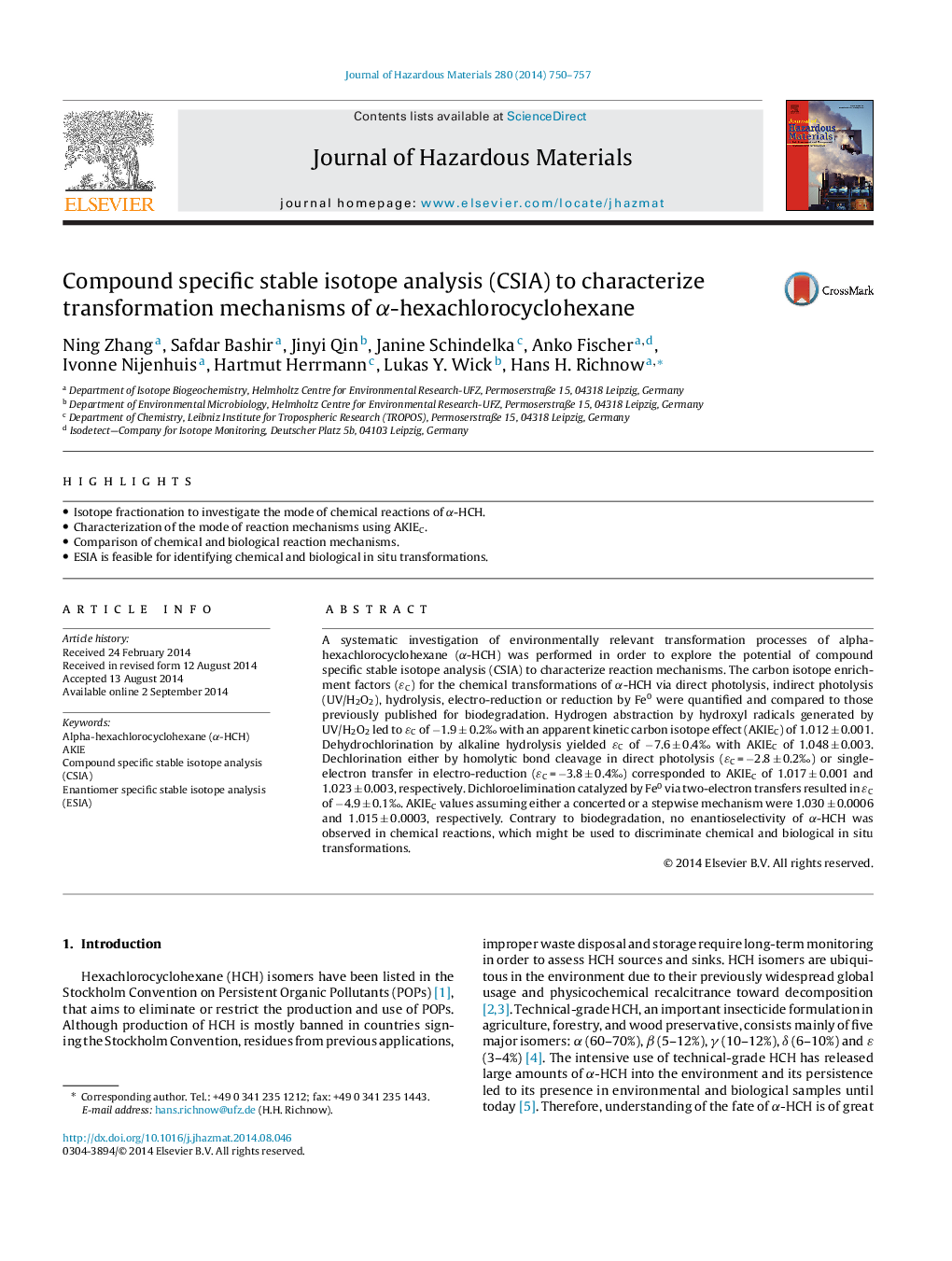| Article ID | Journal | Published Year | Pages | File Type |
|---|---|---|---|---|
| 6971618 | Journal of Hazardous Materials | 2014 | 8 Pages |
Abstract
A systematic investigation of environmentally relevant transformation processes of alpha-hexachlorocyclohexane (α-HCH) was performed in order to explore the potential of compound specific stable isotope analysis (CSIA) to characterize reaction mechanisms. The carbon isotope enrichment factors (ÉC) for the chemical transformations of α-HCH via direct photolysis, indirect photolysis (UV/H2O2), hydrolysis, electro-reduction or reduction by Fe0 were quantified and compared to those previously published for biodegradation. Hydrogen abstraction by hydroxyl radicals generated by UV/H2O2 led to ÉC of â1.9 ± 0.2â° with an apparent kinetic carbon isotope effect (AKIEC) of 1.012 ± 0.001. Dehydrochlorination by alkaline hydrolysis yielded ÉC of â7.6 ± 0.4â° with AKIEC of 1.048 ± 0.003. Dechlorination either by homolytic bond cleavage in direct photolysis (ÉC = â2.8 ± 0.2â°) or single-electron transfer in electro-reduction (ÉC = â3.8 ± 0.4â°) corresponded to AKIEC of 1.017 ± 0.001 and 1.023 ± 0.003, respectively. Dichloroelimination catalyzed by Fe0 via two-electron transfers resulted in ÉC of â4.9 ± 0.1â°. AKIEC values assuming either a concerted or a stepwise mechanism were 1.030 ± 0.0006 and 1.015 ± 0.0003, respectively. Contrary to biodegradation, no enantioselectivity of α-HCH was observed in chemical reactions, which might be used to discriminate chemical and biological in situ transformations.
Related Topics
Physical Sciences and Engineering
Chemical Engineering
Chemical Health and Safety
Authors
Ning Zhang, Safdar Bashir, Jinyi Qin, Janine Schindelka, Anko Fischer, Ivonne Nijenhuis, Hartmut Herrmann, Lukas Y. Wick, Hans H. Richnow,
